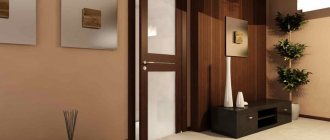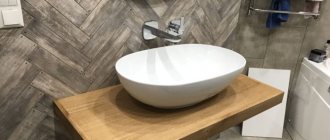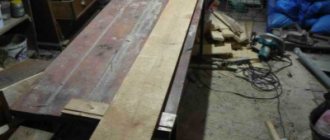Periodic ventilation prevents stagnation of moist air, the appearance of fungus, mold and rust. For proper air exchange, silent exhaust fans are installed in the bathroom. The unit received this name due to the minimal indicators of the reproduced sound. The device produces noise that fluctuates between 20-25 dB. The sound pressure range is equal to a barely audible whisper. Being three steps from the unit, the noise from the rotation of the blades cannot be heard.
The ventilation system occupies a special place in the improvement of living space.
Benefits of a silent fan
The advantages of a silent fan include the following indicators:
- reduced amount of vibrations;
- low noise level;
- high performance;
- excellent quality of materials, assembly and components;
- convenient operation;
- easy installation.
The disadvantage of the device is the price, which is more than compensated by the listed advantages.
A hood in a bathroom or toilet with a built-in silent fan is a compact, multifunctional and energy-intensive device.
Why is there a fan in the bathroom?
A bathroom is a room in which the temperature and humidity are always elevated. According to current legislation, bathrooms in residential buildings must be provided with forced or natural ventilation. The accumulation of excess moisture in the air leads to corrosion and mold. The latter is the worst enemy for human health. Prolonged proximity to a colony of microscopic organisms leads to a deterioration in health. It is manifested by the following symptoms:
- headache;
- dizziness;
- diseases of the respiratory system;
- general exhaustion of the body.
Due to the wide range, the consumer often faces difficulties in making the right choice.
Since mold toxins fill the entire space, stale air first turns into an invisible “killer”, and then slowly poisons the apartment owners. By installing a silent exhaust fan in the bathroom, you normalize the level of humidity and temperature. By removing exhaust air, the device neutralizes dust particles, viruses, harmful fumes and carbon dioxide.
Types of silent fans
Appliances for household hoods vary in design and installation location. By device type they are:
- duct;
- axial;
- radial;
- invoices.
There is another classification - according to additional functionality. The devices may have manual and electronic switching modes, light, motion and humidity sensors. The model range is also divided according to the installation location into the following categories: wall-mounted, ceiling-mounted and built-in.
Every bathroom has a ventilation system. However, many, especially during the renovation process, prefer to close it at the stage of finishing work.
Fans are also distinguished by design:
- with flat front panels;
- with backlight;
- with matte and glossy panel.
The unusual appearance of the device can become the highlight of the bathroom design.
It is recommended to install forced ventilation, which includes a silent fan.
About the channel
The device is installed at the base of the duct. Since the housing is not equipped with rubber elements, additional vibrations and noise occur during operation. Despite this design feature, the unit is much more efficient than a conventional fan.
A duct fan is one of the most effective ways to improve air exchange in a room.
About the axial
The impeller passes air in the direction of movement of the engine rotor. The device body suppresses 80% of noise.
An axial fan is found in almost every home today.
About radial
It is extremely rarely used in domestic conditions. Radial type devices can be found in the workshops of industrial enterprises. To install a ventilation system, you will need to make several channels, each of which will have a separate fan installed. The large-sized device produces minimal noise, but due to its large size it has become persona non grata in residential buildings.
A radial fan has a specific principle of organizing air flow.
About the invoice
The most commonly used exhaust fan model. It fits into the ventilation shafts of apartment and private buildings. The unit is easily installed by mounting it at the outlet of the ventilation duct.
Overhead bathroom fans are one of the most common types of fans for home use.
Types of duct fans
Today at points of sale you can find fans of several different types.
These include:
- axial, less often called axial;
- radial;
- centrifugal.
Each type has its own advantages and disadvantages, so you should know them.
Group #1 – axial fans
A characteristic feature of this variety is the direction of air flows along the axis of the electric motor, on which the impeller is located, which is responsible for the movement of air masses.
Any axial duct unit is the simplest type of duct fans. Nevertheless, they are quite effective and economical. In addition, among such equipment there are quite a lot of modern technologically advanced and safe models that can provide a sufficient level of living comfort
The main advantages of axial fans for all kinds of hoods are:
- low productivity required to move air masses;
- economical electric motor;
- simple design.
The listed features make units belonging to the presented type the most silent without any additional measures. This allows us to rank them among the most affordable, and therefore in demand for any household needs.
The main disadvantage is considered to be low performance, which is still quite sufficient for solving various local problems.
Group #2 – radial fans
Such devices are more technologically advanced than the axial ones described above. This is evidenced by the fact that the air flows do not move directly along the axis, but thanks to the special shapes of the impeller blades, they are mixed, compressed and directed towards the housing.
In this case, a vacuum effect is created behind the trailing edges. This leads to rapid absorption of external air currents.
Radial units are more efficient than their axial counterparts. When choosing them, you should remember that there are 2 subtypes of such fans and the quietest are considered to be products with forward-inclined blades, and they are also significantly more economical than their counterparts with backward-inclined blades
Thus, the radial type of fan intended for exhaust comes in two types:
- with shoulder blades tilted forward;
- with shoulder blades tilted back.
The first type is optimal for silent operation; moreover, it is more economical, by an impressive 20%. But if performance is an important parameter, then it is better to purchase fans whose blades are tilted back.
An important feature of each radial fan for any type of hood is compactness. This advantage is especially valuable when the installation space is difficult to access or limited.
Group #3 – centrifugal fans
This is the most modern, quietest and most efficient type of duct fans. Their operating principle is similar to their radial counterparts. That is, closer to the body, increased pressure is created, and in the center there is a rarefied space, which leads to more efficient suction of external air masses.
Centrifugal fans are the least known type of fan. Nevertheless, such products are among the most technologically advanced, productive and silent. The only downside is that they are too powerful for small bathrooms, toilets and even kitchens in ordinary apartments and even many private houses
Features of the design and operating principle make centrifugal fans the quietest. In addition, they can be installed directly in the ventilation shaft of the apartment, which eliminates the negative impact on the aesthetic properties of the room.
And most importantly, this helps to increase the power of units of this type and reduce the impact of moisture and dust on them, which extends their service life.
Regardless of the type of duct fan, its performance and functionality, it is recommended to clean it from dirt every 1-3 years. It is advisable to carry out the same operation with bearings, which will extend the service life and also increase safety
A significant disadvantage of any centrifugal fan is its high performance, as a result of which they can only be used in rooms of 15 m² or more.
Fan sizes
Manufacturers produce models with different diameters. The volume of air masses removed directly depends on its size. The more air the device removes, the faster the condensation in the room disappears. But at the same time, the more often the fan replaces room air, the faster the bath “cools down” and becomes cold. The operation of the heating system at home can be negated by an incorrectly selected diameter of the device.
Important! Excessive performance of the unit leads to excessive consumption of thermal energy carrier.
After installing the fan, you will gain many benefits.
For a private house it is much more difficult to think through a ventilation scheme than for an apartment. Design organizations took on the headache of high-rise building residents. They made the necessary calculations even before laying the foundation. The owners of the living space just have to choose a bathroom fan that fits the size of the ventilation hole.
The minimum fan diameter size is 80 mm, and the largest is 200 mm. According to the standard, all device dimensions are multiples of 20 mm. The dimensions are directly related to the type of device design. The devices are produced in standard sizes:
- channel type – 200 mm;
- exhaust – 100 mm;
- axial – 125 mm.
With a fan, you will get rid of the problem of mold and mildew associated with high humidity in the room.
The configuration of the device is round, rectangular and square.
Important! The configuration of the unit must correspond to the shape of the ventilation duct.
A few words about the importance of air ventilation in wet rooms
High-quality forced ventilation in bathrooms allows you to avoid many problems that directly interfere with comfort and even cause harm to health. With the help of exhaust fans you can:
- Avoid the formation of condensation on bathroom surfaces;
- Get rid of possible mold and rust formation;
- Extend the performance of fittings
- Create an optimal microclimate by controlling not only humidity, but also temperature
- Maintain clean air and sanitation of the premises
But in order for all this to really work, you need to choose the fan very carefully.
Moisture resistance of the device
Devices are marked according to IP protection classification. The higher this indicator, the more reliable the device. The bathroom is a place where splashes and steam cannot be avoided. The household appliances present here are constantly in the “risk zone”. If the room is damp, electrical appliances may fail due to a short circuit. In order to protect household appliances, it is necessary to install fans with a moisture-resistant housing. The safety of the working elements depends on the material of its manufacture and the quality of assembly. The durable housing, which is hermetically sealed, prevents moisture from penetrating inside.
There will be no sudden temperature changes in the room if there is a home hood.
Important! When ordering a device, look at the IP marking. It contains letters and numbers. The first number indicates the degree of protection from mechanical damage and dust, and the second – from water. Choose a device with a higher number. The higher it is, the more stable the body is. The degree of protection leaves no chance for moisture, which can disrupt the operation of electrical parts.
Those who like to take long hot baths will benefit from a device that can withstand high temperatures. This category of fans operates smoothly at temperatures from 70 to 180o C.
Conclusions and useful video on the topic
Expert review of popular models:
By choosing the right fan, you will ensure normal air exchange in the rooms, create a comfortable environment, and save on utility bills. But before choosing, be sure to study the characteristics of the unit and compare its capabilities with the tasks.
Our rating of duct axial and radial fans, as well as a comparative table of the main characteristics will help you with this.
Do you have a duct fan installed? Which model did you prefer and why? Are you satisfied with the performance of the equipment? Tell our readers about it - leave comments in the block below.
Models with extended functionality
Ventilation hood devices are also divided according to the presence of additional options:
- check valve;
- closing blinds;
- timer;
- individual switch.
Each species is interesting in its own way.
The need to deal with unpleasant odors will disappear, as the air is constantly replaced.
Fan with check valve
The device prevents backflow of air. When it is not working, air masses from the ventilation duct do not flow inside. Installation of this model is recommended in high-rise buildings, where pressure differences are created between neighboring apartments, or air leakage occurs from a common ventilation shaft.
A practical, silent bathroom fan with a check valve quickly removes mustiness and unpleasant odors.
A fan with a check valve is also installed in houses where the hood goes directly to the street. Here the device not only prevents the influx of air masses from the outside, but also prevents the entry of dirt, dust, smoke, insects, allergens and small particles. Thanks to its design feature, the fan reduces heat loss that leaves the room along with the exhaust air.
Fan with timer
A practical and economical unit among its analogues. It not only takes care of the microclimate of the bathroom, but also reduces electricity costs. The device operates with a delay and responds to turning the light on and off. When the bathroom light is turned on, the fan starts after N amount of time. And when the light is turned off, it stops working after a few minutes. The timer is responsible for delaying the startup and shutdown of the device.
Bathroom hoods with a timer are very easy to use.
Time-based forced exhaust significantly reduces utility bills and extends the service life of the device. The delay range ranges from 3 to 30 minutes. You can set the delay time at your discretion. The timer block is reliably protected from splashes and foreign particles.
Battery powered fan
A quiet device that operates not from a battery, but from batteries. This model is appropriate in rooms with extremely high humidity and in places where it is difficult to connect it to the general power supply system.
The battery-powered device greatly simplifies the installation of the hood.
Fan with curtain
The unit with automatic blinds is an extremely simple device in design. It is equipped with an electric motor, which is responsible for the movement of the axis. The impeller blades rotate along with the axis. The low-noise fan, equipped with a curtain, is controlled by a special built-in drive. When the device is inactive, the blinds close, thereby preventing reverse draft and drafts. The following indicators are also attributed to the strengths of the model:
- compact dimensions;
- simple installation;
- minimal electricity consumption.
An automatic exhaust fan is suitable for families with small children and people who are prone to colds from the slightest draft.
TOP 10 silent exhaust fans for the bathroom
Let's look at the TOP 10 popular household silent fans with a check valve. It will include both budget options and advanced models of various types.
Tenth place
The TOP 10 opens with the budget model Aero Still 100 from the manufacturing company Blauberg. This is a clip-on fan with an extremely low noise level (25 dB) of an axial type.
The power of the device is 5.5 W, and the throughput is 85 m3 of air mass per hour. Mechanical control type.
It features very low energy consumption and also price. On average it sells for 1,500 rubles.
Ninth place
Model SILENT-100 CZ from the manufacturer Soler & Palau. This is a silent axial fan. Quite a simple and productive model, turned on manually.
A power of 8 W will ensure proper air exchange in small bathrooms. The fan is square in shape, with sides 15.8 cm, planting depth 8.4 cm, and installation diameter 100 mm.
Available only in white. The average price of the model is 2500 rubles.
Eighth place
Model 100 Quiet from the manufacturer Vents. This is an axial overhead fan in the mid-price category. Provides a capacity of 97 cubic meters. m of air per hour at a power of 7.5 W.
The noise level is 25 dB, the fan will actually be inaudible even within the bathroom. The control panel is located on the fan housing.
The average price of this model is 3500 rubles.
Seventh place
Model DIL 100/270 from the manufacturer CATA. This version of a silent duct fan is suitable for large bathrooms. Air exchange of 270 cubic meters. m per hour is achieved thanks to a power of 30 W.
The control is mechanical, there is no additional functionality, and it has a low noise level. The installation diameter is similar to the DIL 100/130 model - 98 mm, and dimensions - 10x20x31 cm.
The average price of this fan is five and a half thousand rubles.
Sixth place
Model DIL 100/130 from the manufacturer CATA. This fan is of duct type. Designed for medium-sized bathrooms, handles 130 cu. m of air per hour. Mechanical control.
For a duct fan it has small dimensions - 10×17.7×23.8 cm, as well as a low noise level, up to 24 dB. The installation diameter is 98 mm, made in white.
The average price of the model is 6 thousand rubles.
Fifth place
Model SILENT-100 CDZ from the manufacturer Soler & Palau. This is a silent bathroom fan with an axial type check valve. Power, air exchange and dimensions are similar to the SILENT-100 CZ model. But, unlike it, this fan is controlled using a control panel.
There is an infrared motion sensor for activation. There is also a timer with a shutdown delay function.
The average price of such a silent fan model is 6,500 rubles.
Fourth place
Model Punto EVO ME 100/4 LL T from the manufacturing company Vortice. This is a silent axial fan with a check valve for the bathroom. Its operating power is 9 W. In an hour, it passes through itself up to 95 cubic meters of air masses, this figure is suitable for small-sized baths.
The control is mechanical, there is a programmable on/off timer, as well as 2 speed modes. The installation diameter of the fan is 100 mm, and the dimensions are 16x16x12 cm.
The average price in the country for this model is seven thousand rubles.
Third place
Model Vort Press Habitat LL 45/135 from the manufacturer Vortice. This is a radial type ventilation system. Its operating power reaches 29 W, and the hourly processing of air masses is 150 m3.
It has a high degree of protection IPX 4 (direct contact with water on the fan will not affect its operation). It can be installed both on the wall and on the ceiling. Two blade rotation speed options.
Sold at an average price of 9 thousand rubles.
Second place
Model Punto Evo ME 100/4 TP HCS from the manufacturer Vortice. This is an advanced version of the axial fan for bathrooms. There are two blade rotation speeds. Switching on occurs using a humidity sensor, and there is also a timer.
Power 9 W, passes 95 m3 of air masses per hour. The installation diameter is 100 mm, and the dimensions are 16x16x12 cm. The color of the device is white.
The average price of the model is 9,500 rubles.
First place
And this TOP 10 is completed by the Norte model from Pax. This is a premium silent axial fan for small to medium sized bathrooms. Its power is only 4 W, which ensures low power consumption, and the air exchange is 110 cubic meters. m/hour. Very low noise level - dB.
The check valve is not pre-installed, but it can be connected. Mounted into a wall or ceiling. Controlled by remote control, a humidity and presence sensor is also installed. This is a great system for the bathroom.
On average it sells for 10 thousand rubles.
Which device should I buy?
When choosing a bathroom fan, consider the following characteristics:
- workmanship;
- location;
- type and size of the ventilation duct section;
- performance;
- additional options;
- noise level;
- design.
To determine the performance of the device, it is necessary to calculate the exhaust ventilation based on the air exchange rate. This concept refers to the number of times the air is replaced with fresh air in one hour. For the calculation, take the area of the bathroom, and the air exchange rate is equated to 7 times.
If the fan is installed correctly, then there should be no problems with its operation, and it will effectively cope with the amount of air intended for it in the room.
For example, you have a bathroom with an area of 5 m2 with ceilings of 2.75 m. This means the volume of the room is 13.75 m3. Multiply the resulting value by 7. The result will be the required fan performance.
All devices produce noise from air movement or vibration of working elements. Its level depends on the configuration of the housing, the impeller and its rotation speed. The more successful the combination of these factors, the quieter the device operates.
Based on the room, its dimensions and the preparation of the ventilation shaft, you can choose the right fan.
Important! The higher the performance, the louder the sound produced.
For a standard bathroom with an area of no more than 9 m2, models with an air exchange rate of up to 100 m3/h are used. In this case, the noise will be minimal. But if the apartment has a large bathroom, then you will need a more powerful unit, which causes more noise. To reduce the noise pressure level, it is necessary to select the appropriate fan operating mode. For example, a high-performance model with a timer is suitable.
If you don’t know which fan is best to choose for your bathroom, rely on the popular models from the rating below.
By installing the fan correctly, you can make your stay in the bathroom comfortable and enjoyable.
How to install correctly
The installation process requires preliminary preparation. If rough and final renovations are being done in an apartment, it is necessary to run a cable to the fan installation site and prepare a hole so as not to subsequently damage the tiles. The wire cross-section and hole size depend on the selected fan model. Step-by-step installation instructions:
- The fan must be disassembled by removing the top panel and getting to the power connection point.
- Turn off the mains voltage and make sure there is no voltage. After this, connect the phase, neutral and ground to the required terminals and securely clamp the contacts with a screwdriver.
- Turn on the general voltage using the switch and check the operation of the device. If only automatic switching is provided, open the hot water and wait for the device to operate.
- If everything is in order, you need to install the fan in the prepared hole. It is enough to insert it inside and secure it in the prescribed way. Most household hoods are attached to the wall using dowels. When it is not possible to drill holes, special silicone is used for strong fixation.
- After installation, the top panel of the device is put back and its functionality is checked. At this point, the installation process is considered complete.
Installation Tips
Before installing a new fan, you will need to dismantle the old one. It goes in the following order:
- de-energize the device from the mains;
- remove the cover;
- disconnect the wires from the power terminals;
- unscrew the holding screws;
- remove the device from the ventilation shaft.
For safe operation, as well as collection and further removal of condensate, many manufacturers add a special tray to the fan kit.
When the fan is glued to the plate, carefully dismantle the housing without widening the ventilation duct hole.
TOP 5 silent fans for the bathroom
The top five were headed by devices of different classes.
Fans of modern technology will like fans with a variety of sensors and lighting.
SILENT-100 CZ
The model provides excellent air exchange. The body is made of high-quality plastic, which does not lose its original appearance for a long time. Power is up to 90 m3/h, noise is up to 26.5 dB. When it works, only the sound from the movement of air is heard, and not the hum from the impeller.
Elicent Style 100 PRO
Fan with check valve from an Italian manufacturer. The main feature of the design is the suction of exhaust air from four sides. The performance of the unit is the same as that of the SILENT-100 CZ, but the noise level is higher - 31.4 dB.
The option of a corded switch and timer can be added.
Standard 4ETF
Fan with photo timer, powered by a photocell. The model is used for periodic and continuous exhaust, since the power is 100 m3/h. Accordingly, the noise level is higher - 35 dB.
Motors mm-100
An ultra-thin and incredibly quiet unit from a Bulgarian brand. It can withstand extremely high temperatures and produces a barely audible sound during operation. The disadvantage of the device is its low productivity of up to 60 m3/h. Suitable for small spaces.
The design mostly has only positive reviews.
EBB-250NS
High-performance model of a surface-mounted centrifugal fan. This type of device will be needed for a ventilation system with increased resistance in the duct.
The rating brings together the best devices of their kind. Choose a high-quality fan so that the hood works smoothly and the necessary microclimate is maintained in the bathroom.











